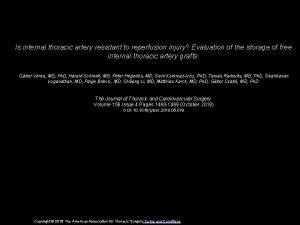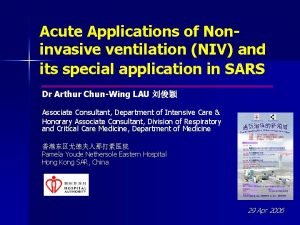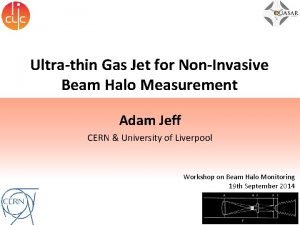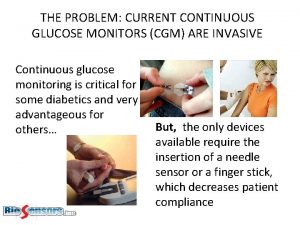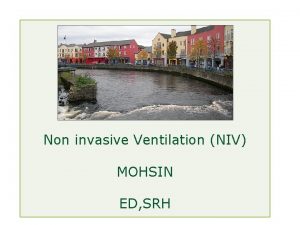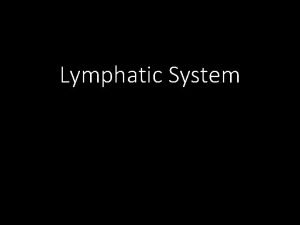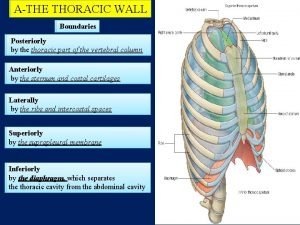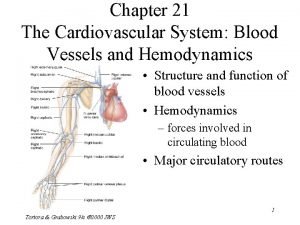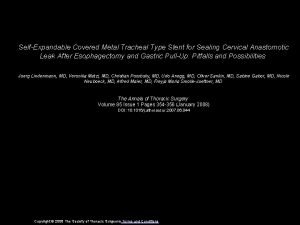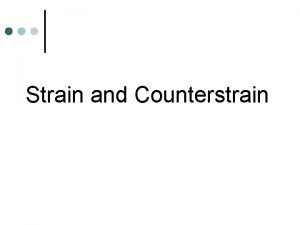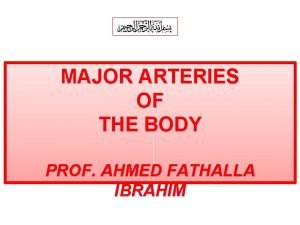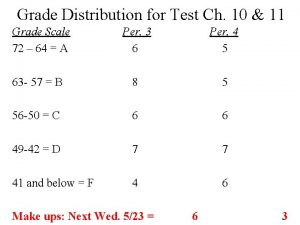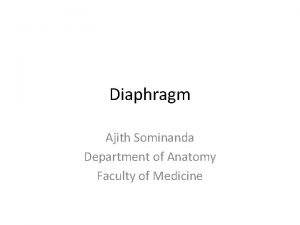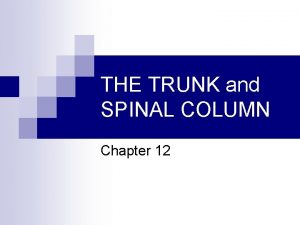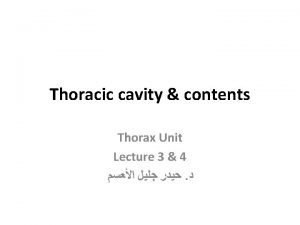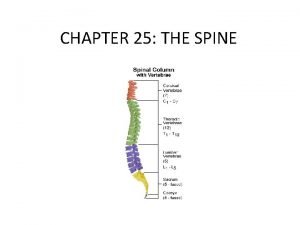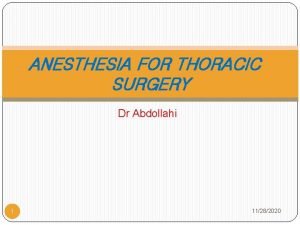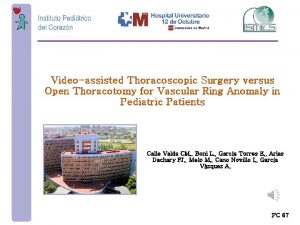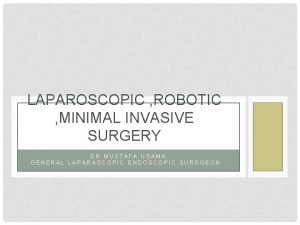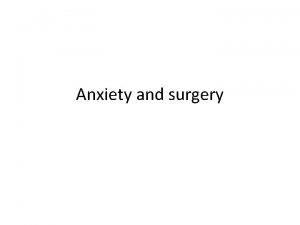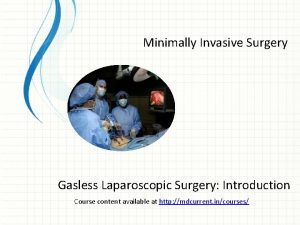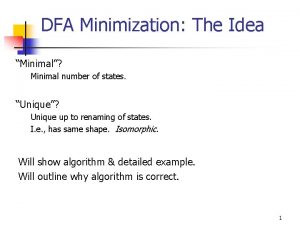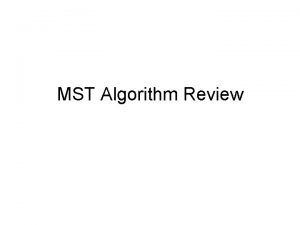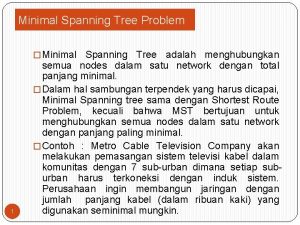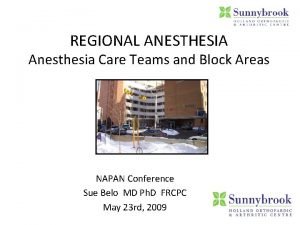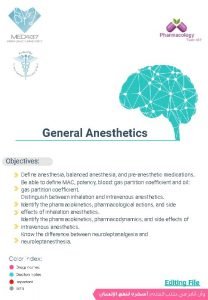Anesthesia for Thoracic Surgery Thoracotomy minimal invasive surgery

















































- Slides: 49

Anesthesia for Thoracic Surgery 高雄麻醉科系 黃佳絨



• Thoracotomy • minimal invasive surgery 胸腔內視鏡輔助手術(Video-Assisted Thoracoscopic Surgery, VATS) # 利用次肺葉切除術(sublobar resection), 包括楔狀切除術(wedge resection)及肺節切 除術(segmentectomy)來取代肺葉切除術 (Lobectomy)。

• 更好視野 OLV • 更快恢復 early extubation

OLV


LUNG ISOLATION



• Double Lumen Endotracheal Tube


大小 • Ideally, a properly sized DLT passes without resistance through the glottis and advances easily within the trachea, and has a bronchial component that also passes into the intended bronchus without difficulty • DLTs that are too small have problems including: – difficult to suction – difficult to pass bronchoscope – prone to malposition due to need for large endobronchial cuff volume

R or L

R or L



Placement of double-lumen tube


確認 • 左右肺 • 深度 : 12 + (patient height/10) cm. 170 cm-- 29 cm confirm position with fiberoptic bronchoscope (auscultation alone is unreliable)

Protocol for Checking Placement of a Left-Sided Double-Lumen Tube. 1. Inflate the tracheal cuff (5– 10 m. L of air). 2. Check for bilateral breath sounds. Unilateral breath sounds indicate that the tube is too far down (tracheal opening is bronchial). 3. Inflate the bronchial cuff (1– 2 m. L). 4. Clamp the tracheal lumen. 5. Check for unilateral left-sided breath sounds. a. Persistence of right-sided breath sounds indicates that the bronchial opening is still in the trachea (tube should be advanced). b. Unilateral right-sided breath sounds indicate incorrect entry of the tube in the right bronchus. c. Absence of breath sounds over the entire right lung and the left upper lobe indicates that the tube is too far down the left bronchus. 6. Unclamp the tracheal lumen and clamp the bronchial lumen. 7. Check for unilateral right-sided breath sounds. Absence or diminution of breath sounds indicates that the tube is not far enough down and that the bronchial cuff is occluding the distal trachea.

Problems with double-lumen tubes • (1) the tube tip is too distal: • (2) the tube tip is too proximal: • (3) the tube is in (the wrong side).


OLV • Clamp tube • Ventilator 設定 • O 2 (100% ? )




塌陷問題 • 有ventilation • 沒有 ventilation • OLV 前 使用? % O 2 (on the speed of collapse of the nonventilated lung during OLV. )



• the period of two-lung anesthesia before the start of OLV, atelectasis will develop in the dependent lung. • Recruitment is important to maintain Pa. O 2 levels during subsequent OLV. • recruitment maneuver to the dependent lung (similar to a Valsalva maneuver, holding the lung at an endinspiratory pressure of 20 cm H 2 O for 15 to 20 seconds) immediately after the start of OLV to decrease this atelectasis

OLV 使用? % O 2 • Classically, (Fi. O 2) of 1. 0 has been advocated while performing one-lung ventilation. The rationale behind using a higher inspired fraction of oxygen is to have a safety margin. • Higher Fio 2 also leads to vasodilatation, and this may help increase the blood to the ventilated lung. • Oxygenation at Fi. O 2 of 1. 0 can lead to atelectasis, so it is advisable to initiate with a Fio 2 less than 1. 0 and increase if needed.

• A highly reactive form of the oxygen molecule, called the oxygen free radical, which destroys proteins and membranes in the epithelial cells, probably causes this damage.

• hypoxia develops during the performance of one lung ventilation



Alternatives to One-Lung Ventilation • (apneic oxygenation) into an unobstructed tracheal tube • High-frequency positive-pressure ventilation and high-frequency jet ventilation

不盡人意 • two lung ventilation.

手術結束重返two lung ventilation • Re- expansion • Air leak • lung protection. The ventilated dependent lung is prone to ventilator-induced lung injury due to higher tidal volumes used. The non-dependent non ventilated lung is prone to injury by surgical trauma and ischemia-reperfusion injuries.

Preoperative Considerations • Difficult intubation • Prediction of desaturation during OLV • Postthoracotomy anesthetic management ---- extubation



• Patients who have both PPO FEV 1 and PPO DLCO are greater than 60 percent do not need any further testing to undergo pulmonary resection. • Patients who have either PPO FEV 1 or PPO DLCO less than 60 percent, however, have both values greater than 30 percent need additional testing with stair climbing or a shuttle walk test. • If both values are less than 30 percent, patients should undergo a cardiopulmonary exercise testing with additional measurement of the maximal oxygen consumption.


• Fluid management: • Temperature • Prevent bronchospasm

Postoperative Management • • Routine postoperative care should include maintenance of a semiupright (>30°) position, supplemental oxygen EKG and hemodynamic monitoring adequate pain relief. • a postoperative chest radiograph (to confirm proper position of all thoracostomy tube drains and central lines and to confirm expansion of both lung fields)



 Posterolateral thoracotomy
Posterolateral thoracotomy Minimally invasive surgery
Minimally invasive surgery Thoracic surgery
Thoracic surgery Anesthesia for bariatric surgery
Anesthesia for bariatric surgery Invasive species investigator worksheet
Invasive species investigator worksheet Indiana invasive species council
Indiana invasive species council Least invasive intervention teach like a champion
Least invasive intervention teach like a champion Invasive species compendium
Invasive species compendium Non invasive ventilation
Non invasive ventilation Characteristics of invasive species
Characteristics of invasive species Invasive species growth curve
Invasive species growth curve Role of herbarium
Role of herbarium Invasive candidiasis
Invasive candidiasis Invasive species laws
Invasive species laws Invasive species investigator worksheet
Invasive species investigator worksheet Sesleria autumnalis spacing
Sesleria autumnalis spacing General aseptic fields are managed critically
General aseptic fields are managed critically Invasive species characteristics
Invasive species characteristics Lerman non invasive halo
Lerman non invasive halo Are invasive species always bad
Are invasive species always bad Invasive beatmung über tracheostoma
Invasive beatmung über tracheostoma Doc for invasive aspergillosis
Doc for invasive aspergillosis Exotic species meaning
Exotic species meaning Ontario invasive fish
Ontario invasive fish 100 worst invasive species
100 worst invasive species Invasive species characteristics
Invasive species characteristics Noninvasive glucose meter
Noninvasive glucose meter Invasive species act ontario
Invasive species act ontario Invasive meningococcal disease
Invasive meningococcal disease Non invasive halo brace
Non invasive halo brace Non invasive ventilation
Non invasive ventilation Invasive ductal carcinoma with medullary features
Invasive ductal carcinoma with medullary features Non invasive health monitor
Non invasive health monitor Pouchlike structure at the start of the thoracic duct
Pouchlike structure at the start of the thoracic duct Angle of louis
Angle of louis Thoracic aorta supplies blood to
Thoracic aorta supplies blood to Thoracic nerves
Thoracic nerves Thoracic surgeon
Thoracic surgeon Anterior thoracic counterstrain points
Anterior thoracic counterstrain points Thoracic cage anterior view
Thoracic cage anterior view Posturing medical
Posturing medical Rajesh shah thoracic surgeon
Rajesh shah thoracic surgeon Mental anatomical term
Mental anatomical term Major arteries of the body
Major arteries of the body Pig thoracic cavity diagram
Pig thoracic cavity diagram Diaphragm thoracic level
Diaphragm thoracic level Thoracic extension
Thoracic extension Sibsons fascia
Sibsons fascia Muscles of thoracic spine
Muscles of thoracic spine Thorcic spine
Thorcic spine


